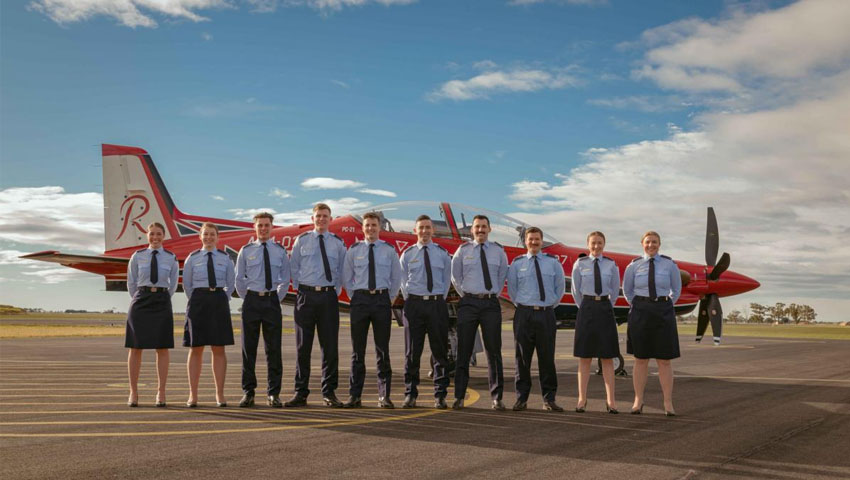Australia’s next generation of Mavericks have successfully completed the first phase of the Royal Australian Air Force’s ab initio flying training at RAAF Base East Sale in Victoria.
Each student has undergone five months of pilot training, including approximately 250 hours of theory instruction, 30 hours simulator instruction and 40 hours of flying in the PC-21 aircraft.
They are also the first students to march out from the newly recommissioned No. 1 Flying Training School (1FTS), and the first RAAF pilots to conduct ab initio training in the PC-21 – the world’s most advanced pilot training aircraft.
Wing Commander Chris Pouncey, Commanding Officer of 1FTS, congratulated the students for completing one of the most challenging courses in Air Force.
"Well done! Your hard work over the past six months has paid off for this important milestone in your careers as military pilots," WGCDR Pouncey said.
The students will proceed to the next phase of their pilot training at No.2 Flying Training School at RAAF Base Pearce in Western Australia. The second 1FTS ab initio pilot course commenced training in April and is scheduled to be completed later this year.
WGCDR Pouncey added, "You are another step closer to becoming qualified pilots – men and women who play key roles in generating Australia’s air power for defence of our national interests."
Air Force is currently transitioning to the PC-21 trainer as part of the most significant technological upgrade in Air Force’s 98-year history.
The Pilatus PC-21 is the world's most advanced pilot training aircraft. As part of the AIR 5428 Pilot Training System project, the PC-21 will replace Air Force's current PC-9/A. It will be based at RAAF Base East Sale in Victoria and RAAF Base Pearce in Western Australia.
Although the PC-21 is a key element of the AIR 5428 project, it is only one part of the story. The new Pilot Training System will be able to train more people faster and to a higher standard, with an:
- Advanced aircraft;
- State of the art simulation; and
- An electronic learning environment.
The system will ensure undergraduate pilots develop the necessary knowledge and skills prior to progressing onto advanced military aircraft such as the F-35A Joint Strike Fighter, Armed Reconnaissance Helicopter, and MRH-90 helicopter.
It is capable of sustained, low-level speeds over 320 knots, and hydraulically assisted ailerons and roll spoilers can produce fighter-like rates of roll in excess of 200 degrees per second.
A digital power management system and automatic yaw compensation makes the PC-21 easy to fly in the circuit, while still providing the performance required for advanced training.






